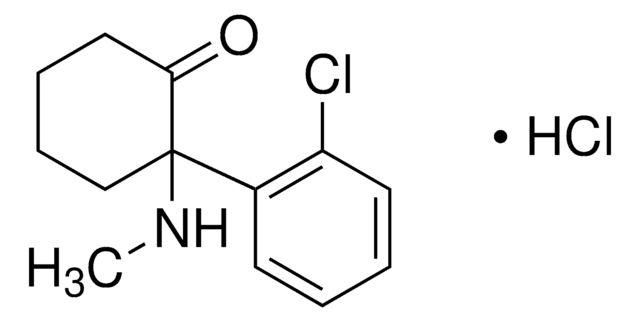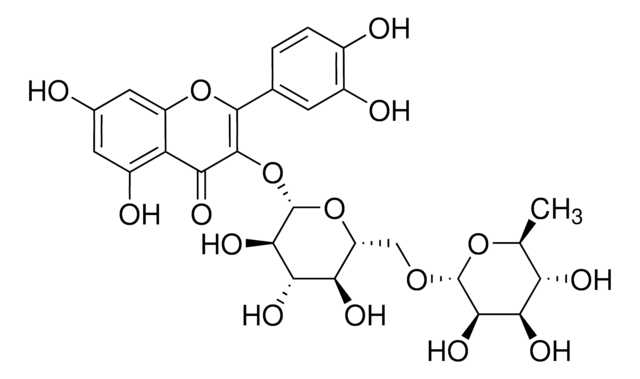H5160
Hyperforin
≥85% (HPLC)
About This Item
Productos recomendados
Quality Level
assay
≥85% (HPLC)
form
solution
storage temp.
−20°C
SMILES string
CC(C)C(=O)[C@@]12C(O)=C(C\C=C(\C)C)C(=O)[C@@](C\C=C(/C)C)(C[C@H](C\C=C(\C)C)[C@@]1(C)CC\C=C(\C)C)C2=O
InChI
1S/C35H52O4/c1-22(2)13-12-19-33(11)27(16-14-23(3)4)21-34(20-18-25(7)8)30(37)28(17-15-24(5)6)31(38)35(33,32(34)39)29(36)26(9)10/h13-15,18,26-27,38H,12,16-17,19-21H2,1-11H3/t27-,33+,34+,35-/m0/s1
InChI key
IWBJJCOKGLUQIZ-HQKKAZOISA-N
General description
Application
- as a reference standard for calibration curve generation in high-perfornamce liquid chromatography (HPLC) analysis
- to test its cytotoxic effect and apoptosis induction in mouse embryonic cells
- as a pregnane X receptor (PXR) in porcine brain capillary endothelial cells for transport assay
Biochem/physiol Actions
signalword
Danger
Hazard Classifications
Acute Tox. 3 Dermal - Acute Tox. 3 Inhalation - Acute Tox. 3 Oral - Flam. Liq. 2 - STOT SE 1
target_organs
Eyes
Storage Class
3 - Flammable liquids
wgk_germany
WGK 2
flash_point_f
49.5 °F - closed cup
flash_point_c
9.7 °C - closed cup
ppe
Eyeshields, Gloves, type N95 (US)
Certificados de análisis (COA)
Busque Certificados de análisis (COA) introduciendo el número de lote del producto. Los números de lote se encuentran en la etiqueta del producto después de las palabras «Lot» o «Batch»
¿Ya tiene este producto?
Encuentre la documentación para los productos que ha comprado recientemente en la Biblioteca de documentos.
Los clientes también vieron
Nuestro equipo de científicos tiene experiencia en todas las áreas de investigación: Ciencias de la vida, Ciencia de los materiales, Síntesis química, Cromatografía, Analítica y muchas otras.
Póngase en contacto con el Servicio técnico










